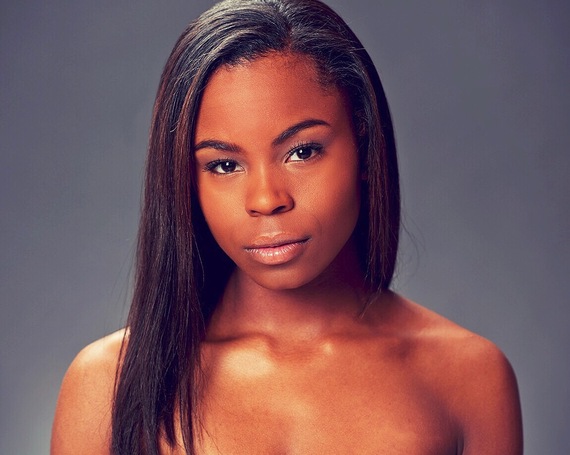By Sadiya Ramos
I race on stage for my first pose, my head facing down. I rush to the boys who lift me up and look to the audience: 62,000 people swaying. They lift their lighters as Mr. Stevie Wonder sings, shaking his dreadlocks to the sound of his music just a few feet from me: "If my eyes were to see, let them be a witness to a world that is color free."
I have not lived in such a world as a black ballerina, but after years of hard work, I arrived at this surreal moment: performing in the Special Olympics on the same stage with Stevie Wonder.
I was just three when Mom noticed me mimicking the liturgical dance routines she created for our Baptist church. I had the long legs, the turned out hips--but mostly the passion. Mom saw my happiness when she enrolled me in ballet programs. Yet I was always the different one. I lacked the blonde hair, blue eyes, and fair skin to be Aurora or Cinderella. No matter how hard I pointed my feet or how high I kicked my legs, I was placed in the back. At 11, I refused to be buried in the shadows. I wanted to shine. I started dancing like I was the only one on stage, and taking additional private lessons to strengthen my weaknesses.
Weekends with Grandma inspired me to be fearless in the face of adversity. She detailed her five-mile walk to school in the burning sun. She struggled to keep her books tight to her chest while wiping sweat from her brow, praying that the Alabama red dirt would not stain her shoes. She could not stop counting the buses of white children speeding down the road.
At 17, she zipped up her white, silky dress and walked down the aisle to say "I do" to Granddaddy. After her first two children, my mother and uncle, she made a mother's ultimate sacrifice--giving away her children. Fearing they would be endangered by the violence toward blacks in the South, she sent them to live in Indiana with her sister, hoping to spare them mistreatment that she encountered. Because of my grandmother, I was born in a different place. And because of where I was born, I now have the opportunity to move ahead of the shadows.
At 17, I won the opportunity to perform at the 2015 Special Olympics. On the eve of the performance, I was restless, for my excitement robbed a couple of hours of my sleep. I woke up anxious, but also very tired. Between washing my hands next to Eva Longoria and dodging Secret Service, I was simultaneously flustered and excited. The gravity of where I would be performing settled within me. As the announcers called the names of the countries in alphabetical order, I began to pace, back and forth. I walked to a corner to stretch and then sat and meditated.
After the performance, we exited stage right and witnessed the First Lady enter from stage left. Backstage, we began to sob with tears of passion, satisfaction, and happiness. I had never felt anything like this.
Performing at the Special Olympics will never slip from my memory's grip. I earned an opportunity that makes the roles I was denied seem measly. I learned that things will not come right away, even if you put your blood and sweat into them. Sometimes the struggle is generations long, as my grandmother's story shows me. I had to wait for my time to shine. On her strong shoulders, and through my willingness to endure, my time came. When I found myself lifted in the air by my fellow dancers, to Stevie Wonder's soundtrack of equality and harmony, I was suspended in an aspirational hope that we are getting closer to witnessing a world that is color free.
Sadiya Ramos, a 2016 graduate of the Academy of the Holy Angels, will be a freshman at the Boston Conservatory in the Fall.
